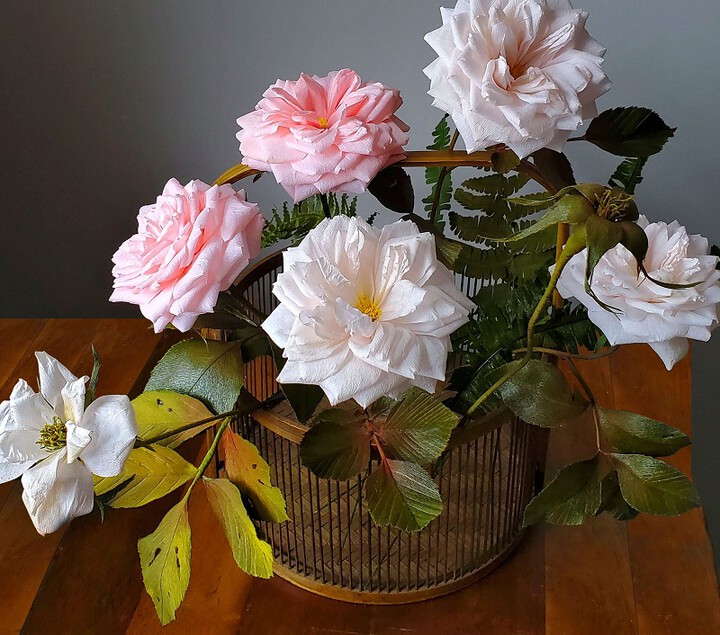By day, Anna Gaseitsiwe investigates financial crime. After hours, she turns paper into unreal blooms.

Anna Gaseitsiwe has a thing for paper trails. When she isn’t managing a team of financial crime investigators in Minneapolis, she’s holding scissors (and feeding a killer Instagram: @apaperflorist). Her hobby has now blossomed into a part-time business, A Paper Florist. Interview with Robin Pfeifer.

RP: Financial crimes and paper flowers seem like two very different worlds. Is there a connection?
AG: They couldn’t be more opposite. It’s going from one personality to another, like Dr. Jekyll and Mr. Hyde. But I like that my worlds do not cross. I’ve drawn a thick line between the two.
RP: How did A Paper Florist come to be?
AG: About two years ago, I was searching for that thing I’m really good at. I went to a bookstore and found a manual on crepe paper art. I’d never worked with paper but had some supplies at home. I learned the basics—paper, scissors and glue—and began experimenting with more advanced techniques.
RP: How has the process evolved?
AG: I’m currently working on a water lotus diorama and I’m taking extreme care to get it as realistic as possible. It requires employing my entire technique arsenal: wax dipping, water coloring, embossing, crepe manipulation, fringing, pastel painting. Just about everything I’ve learned to date. It takes hours.
RP: Were you into real flowers before starting your business?
AG: I liked them but couldn’t really tell them apart. Now I’ve become an accidental botanist. When making something new, I find a fresh sample and pull it apart. Or I find scientific images of the anatomy of a flower to re-create it.
RP: So that’s how you get them to look so real?
AG: When I look at what nature gives us, it’s never perfect. I love looking at rose petals to see cupping and curling and how they fit into each other naturally. If I’m working on a flower, and a petal isn’t hanging right, I remind myself that it’s not meant to be perfect. This has actually been good for my anxiety and perfectionist tendencies.
RP: In what way?
AG: If I feel I need to control something, I can do it through experimentation or trying to perfect one thing. But if I’m making flowers for someone else, I have to find a balance between what I deem enough versus what they think is enough. I get paid by the hour and I can’t charge for my perfectionism.
RP: Why do your clients want paper flowers instead of the real thing?
AG: If someone’s coming to me, they’re already looking for something different. I do a lot of weddings, funerals and large installations using flowers that are rare or out of season. (Small bouquets start around $150.) But I wish more people were aware of the large environmental footprint of using a traditional florist. Most flowers need to be shipped, which creates a significant carbon footprint. When you’re done with my flowers, they’re just paper. You can recycle them.
RP: How long does a paper flower or bouquet typically last?
AG: They last for years if placed away from moisture and sunlight. I also use high-quality paper to lessen color fade over time. A long lifespan is one of the biggest benefits of paper versus real flowers.